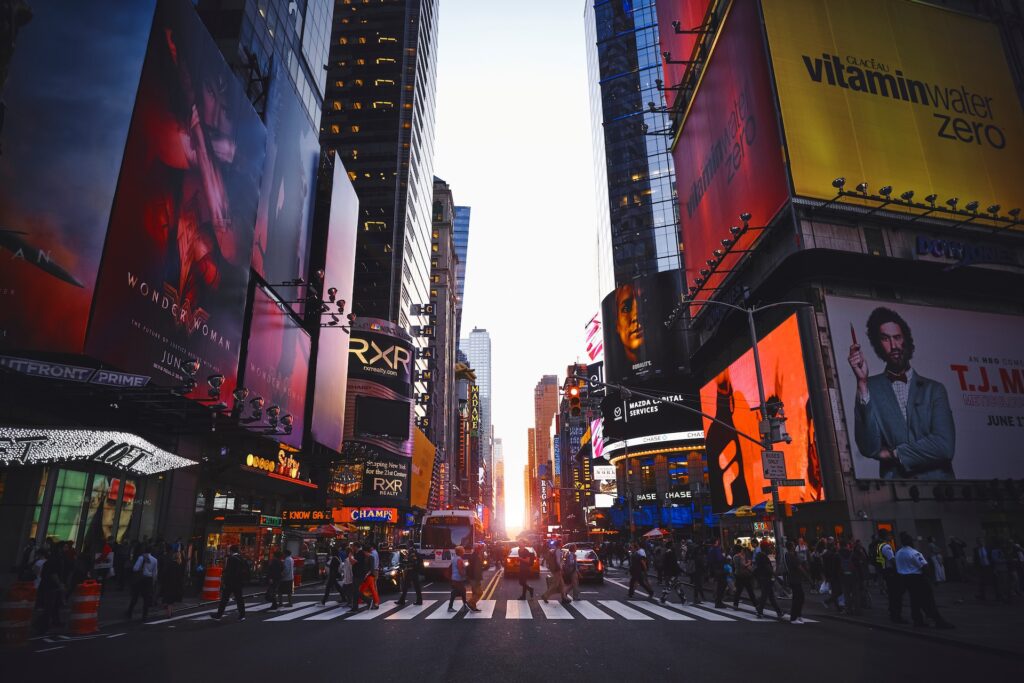Manhattanhenge-the best sunset in New York
Manhattanhenge-the best sunset in New York
When thinking about the Big Apple, the first thing that comes to mind are its impressive skyscrapers, its world-famous skyline dazzles with the brilliant lights of the buildings as the sun goes down and the city begins to come to life. But when we think we have seen everything in New York, it can surprise us even more.
Something that can be lived while visiting this wonderful destination is the so-called Manhattanhenge, which is an astronomical phenomenon that occurs only twice a year and is when the sun sets directly on the streets of the east and west of Manhattan. The skyscrapers thus become the perfect frame around the sun when it sets right in the center. This happens twice a year: once before the summer solstice and once after.
This type of phenomenon also occurs in a similar way in other cities with many skyscrapers and long straight streets, such as Chicago (Chicagohenge), Montreal (Montrealhenge) and Toronto. (Torontohenge)
There is a belief that the sun always rises in the east and sets in the west, but the reality is that, due to the rotation of the Earth and its translation movement, the sun rises and sets in places other than the horizon.
Due to the urban arrangement that was developed thanks to the Commissioners’ Plan of 1811 and that gave rise to the 11 main avenues and the 155 streets that cross the city of New York, thus forming the different neighborhoods of Manhattan, added to the alignment of the streets together with the orientation of the island, the perfect situation is generated so that this wonderful phenomenon called Manhattanhenge can occur.
Neil deGrasse Tyson, an astrophysicist at the New York Museum of Natural History, created the name and used it for the first time in 1997 when describing the effect in an article in Natural History magazine. Tyson explained that he was inspired by its resemblance to Stonehenge, the prehistoric monument found in England, where the sun aligns with concentric circles of upright stones on each of the solstices. It was not until 2002 when the event became popular and began to capture the interest it has today.
Manhattanhenge dates vary depending on the summer solstice; however, it usually occurs around May 30 and July 12 each year. This year 2023 the phenomenon happened on May 30 and will happen again on July 12.
The event can be seen two days in a row, on one day it is seen how the sun rests on the horizon in its entirety (Full Sun), and on the second day the horizon cuts the sun in such a way that only half of the sun can be seen. Sun (Half Sun).
Sunday, May 29 8:13 PM EDT (Half Sun)
Monday, May 30 8:12 PM EDT (Full Sun)
Monday, July 12 8:20 PM EDT (Full Sun)
Tuesday, July 13 8:21 PM EDT (Half Sun)
To enjoy this very special moment, it is advisable to go well in advance (at least 1 hour before) and position yourself as far east as possible on the island. The best streets for viewing Manhattanhenge are those that are wide and have an unobstructed view of New Jersey across the Hudson River. The most recommended are 14th (Union Square), 23rd (Flatiron Building or Madison Square Park) and the Empire State Building and the Chrysler make 34th and 42nd streets especially impressive. Other recommended points are from the top of the Top of the Rock and Hunter’s Point South Park in Queens
Although this astronomical event is eagerly awaited in New York, at most it lasts only 10 minutes. It is at this moment, in which the sunset aligns itself precisely between the buildings, revealing a huge orange ball in the blue sky. For these minutes the city pauses, paralyzing for these moments the frantic traffic so characteristic while thousands of tourists and New Yorkers try to capture the perfect image from their cameras or cell phones.
To obtain more information about Manhattanhenge and to be able to plan this unique and magical moment in the city, we recommend visiting the official website of the Hayden Planetarium of the Natural History Museum, where the best times to enjoy this wonderful event are updated every year.
We have the unbeatable price of $500 per day for your Billboard:
Option 1: Your 60 second video/photo will be shown, 60 seconds per hour 22 times a day.
Option 2: Your 30 second video/photo will be shown, twice an hour, 44 times a day.
Option 3: Your 15 second video/photo will be shown 4 times per hour 88 times per day.
Please let us know which option you would like to choose. Remember that we have a response time of 72 hours.
Manhattanhenge: el mejor atardecer en Nueva York
Tenemos el precio imbatible de $500 por día para tu Billboard:
Opción 1: Se mostrará su video/foto de 60 segundos, 60 segundos por hora 22 veces al día.
Opción 2: se mostrará su video/foto de 30 segundos, dos veces por hora, 44 veces por día.
Opción 3: Se mostrará su video/foto de 15 segundos, 4 veces por hora 88 veces por día.
Por favor, háganos saber qué opción le gustaría elegir. Recuerde que tenemos un tiempo de respuesta de 72 horas.

